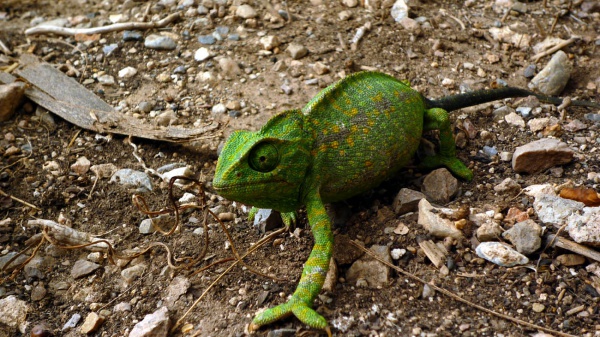Facts About Common chameleon
The common chameleon, also known as the Mediterranean chameleon, is one of only two chameleon species that can be found in Europe. There are four recognized subspecies of this captivating reptile. On average, these chameleons measure about 20-40 cm in length, with females typically being larger than males. They have the remarkable ability to change colors in response to light, temperature, and their emotions, usually exhibiting light-colored lines along their sides.
These chameleons are insectivores, meaning they primarily feed on insects. They employ their long, sticky tongues to catch prey, although they also occasionally consume young chameleons and fruit.
Common chameleons prefer arboreal habitats and have specialized feet adapted for gripping branches. They generally move slowly but can accelerate when defending their territory. These solitary animals come together only during the mating season. Females lay eggs once a year, with larger females tending to lay more eggs. The eggs take about 10-12 months to hatch.
Native to the Iberian Peninsula, Cyprus, and Crete, these chameleons have also been introduced to other regions, including Malta, Sicily, and parts of Italy. In North Africa and the Middle East, they can be found in several countries.
Conservation efforts are ongoing to protect these chameleons, as they face multiple threats. Habitat loss due to urban development and agriculture, predation, the illegal pet trade, and roadkill are significant concerns. Wildfires also pose a risk in some areas. Even though the common chameleon is not considered rare, local populations are vulnerable, making conservation actions essential for their survival.

 Syria
Syria